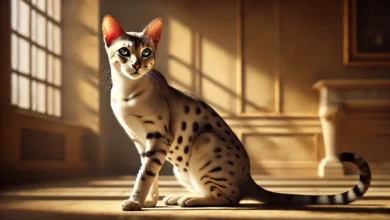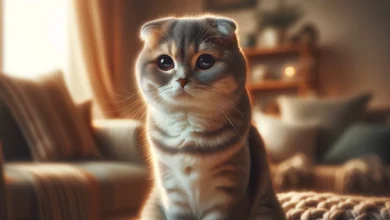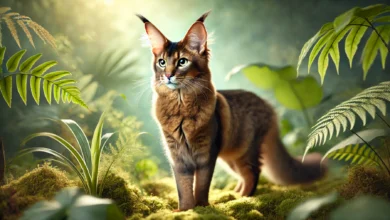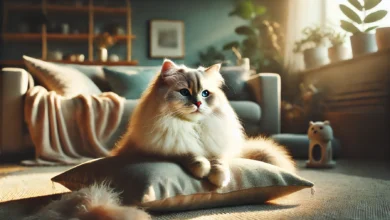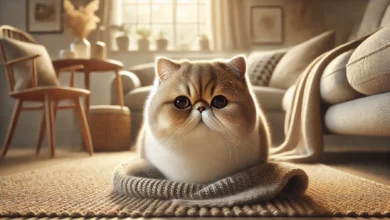Exploring Turkish Angora Cats: Elegance and Energy
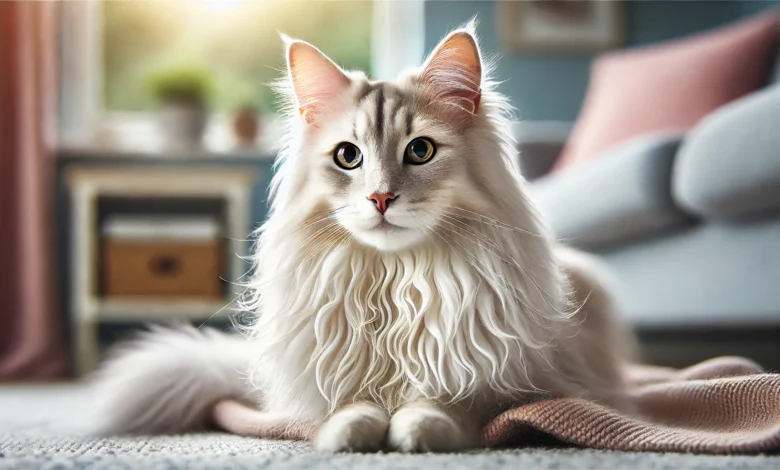
The Turkish Angora breed is enchanting, filled with dignity, cleverness, and energy.
Their sleek, silky coats, together with graceful motion, catch one’s attention softly.
Besides their good looks, Turkish Angoras have such a rich history and characteristics that are truly unique among other breeds of cats.
Whether you are an active cat lover or just thinking about acquiring a Turkish Angora, you need to know its background, traits, and needs to truly appreciate it.
Let’s explore the fascinating world of Turkish Angora cats and start with their intriguing history and origins.
Table of Contents
The History and Origins of Turkish Angora Cats
The Turkish Angora has a very rich history, going back several centuries.
Originating from the Ankara region in Turkey, formerly known as Angora, this cat breed is one of the oldest known domestic breeds.
Their ancestry can be traced back to long-haired cats that were naturally occurring in the mountainous regions of Turkey, which helped them develop their distinctive silky coat to adapt to colder climates.
In Turkish culture, the Turkish Angora was long regarded as a symbol of beauty and grace.
They are mentioned in various historical texts and were popular among royalty.
It is said that they were favored by Turkish sultans, and they played an important role in Turkish folklore and art.
These majestic cats gained international attention in the 16th and 17th centuries when European travelers to the Ottoman Empire brought them back to Europe.
Their exotic appearance and gentle nature made them highly desired in the courts of France and England.
This early exportation of Turkish Angora cats played a significant role in spreading the breed across Europe and later to North America.
However, during the early 20th century, the breed faced near extinction due to the rising popularity of the Persian cat and the lack of much breeding of Angoras.
Turkish breeders recognized that part of their national treasure needed to be saved and began a breeding program at Ankara Zoo to preserve the purity of the Turkish Angora bloodlines.
Today, Turkish Angora cats are recognized by major cat associations and are adored by cat fanciers worldwide.
- Ancient Origins: Turkish Angora cats are among the oldest domesticated breeds, having originated from Turkey.
- Cultural Significance: They were highly prized in Turkish culture and frequently appeared in folklore and art.
- Dispersal to Europe: Turkish Angoras first appeared in Europe in the 16th century, brought by travelers. They soon found their way into royal courts.
- Conservation Efforts: A conservation program in Turkey saved the breed from near extinction in the early 1900s.
The Turkish Angora has a fascinating history, being one of the oldest domestic cat breeds with roots in the Ankara region of Turkey. This breed’s journey from Turkish royalty to global recognition highlights its historical and cultural significance.
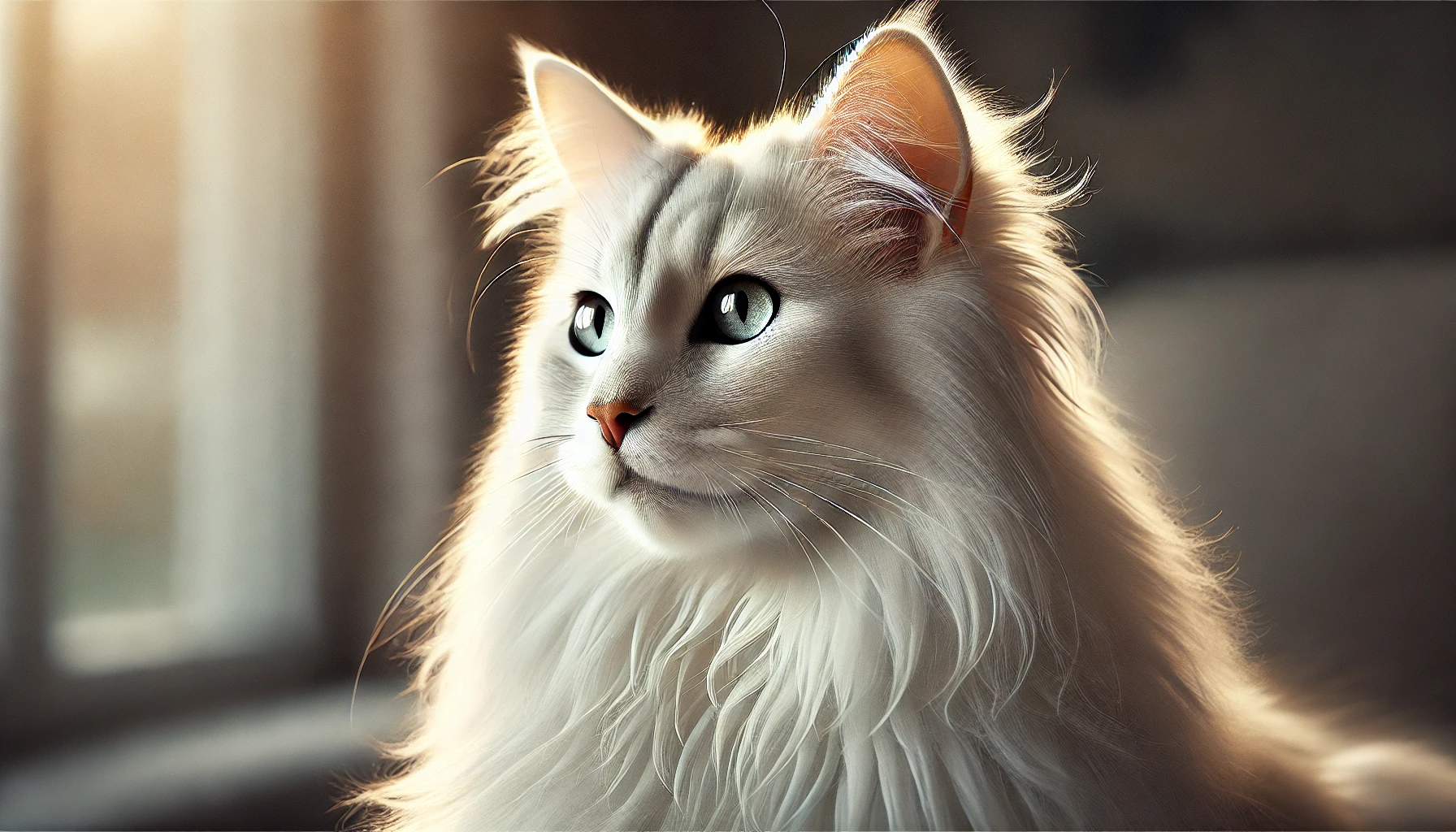
Physical Characteristics and Distinctive Features of Turkish Angora Cats
Apart from their elegant appearance, Turkish Angora cats have special features and characteristics that make them quite different from other varieties of cats.
This breed has a slender and graceful body structure, combined with a marvelous, silky coat.
Their appearance reflects their agility, intelligence, and energetic nature.
Each Turkish Angora cat possesses a set of physical features that truly show its beauty and elegance.
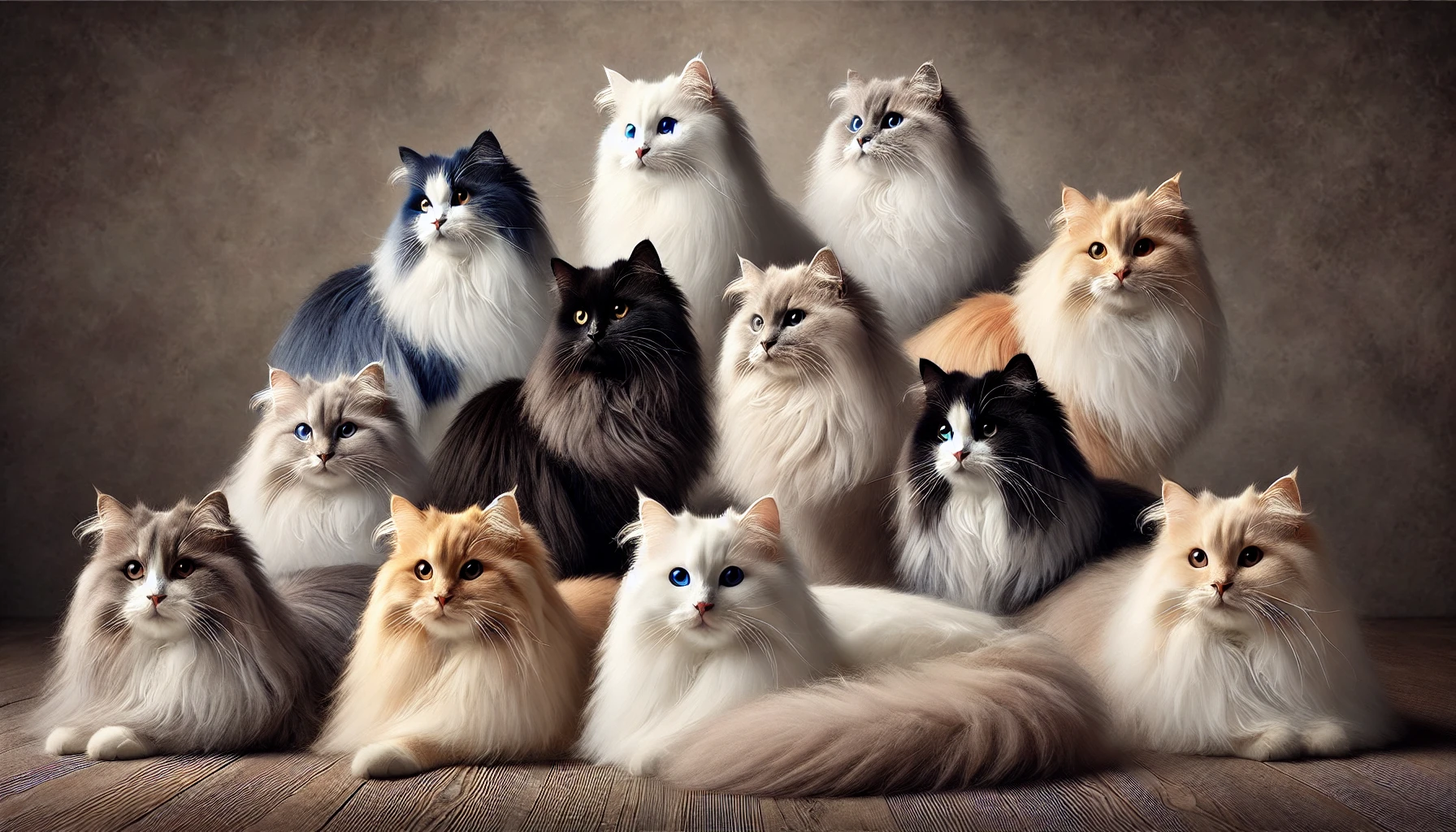
Silky Coat and Color Variants
Turkish Angoras are most famous for their silky, medium-to-long fur, which feels incredibly soft to the touch.
While the white Turkish Angora is perhaps the most iconic, they come in a variety of colors—from black, blue, and red to tortoiseshell or tabby patterns.
Regardless of the color, the coat remains unique due to its sleekness and minimal shedding compared to other long-haired breeds.
Interestingly, Turkish Angoras do not have an undercoat, making grooming easier and reducing matting.
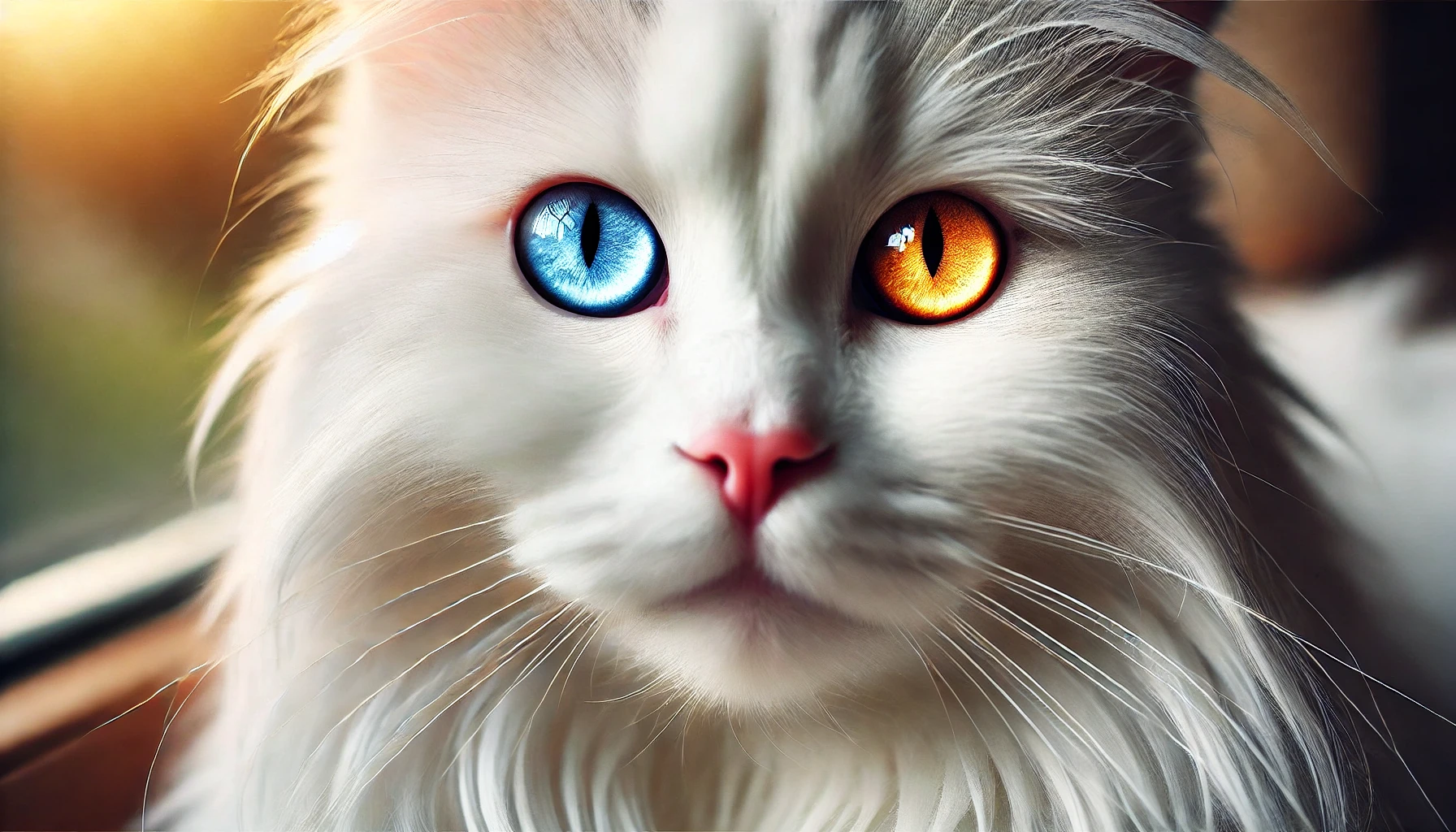
Odd-Eyed Angoras: Distinctive Eye Colors
One of the most distinctive features of Turkish Angora cats is their eye color.
Odd-eyed Turkish Angoras are those with two differently colored eyes—usually one blue and one amber or green.
This genetic trait is common in the breed, particularly among white-coated cats, and adds to their mystique and charm.
Even non-odd-eyed Turkish Angoras have large, almond-shaped eyes in shades of blue, green, gold, or amber, which are captivating to behold.
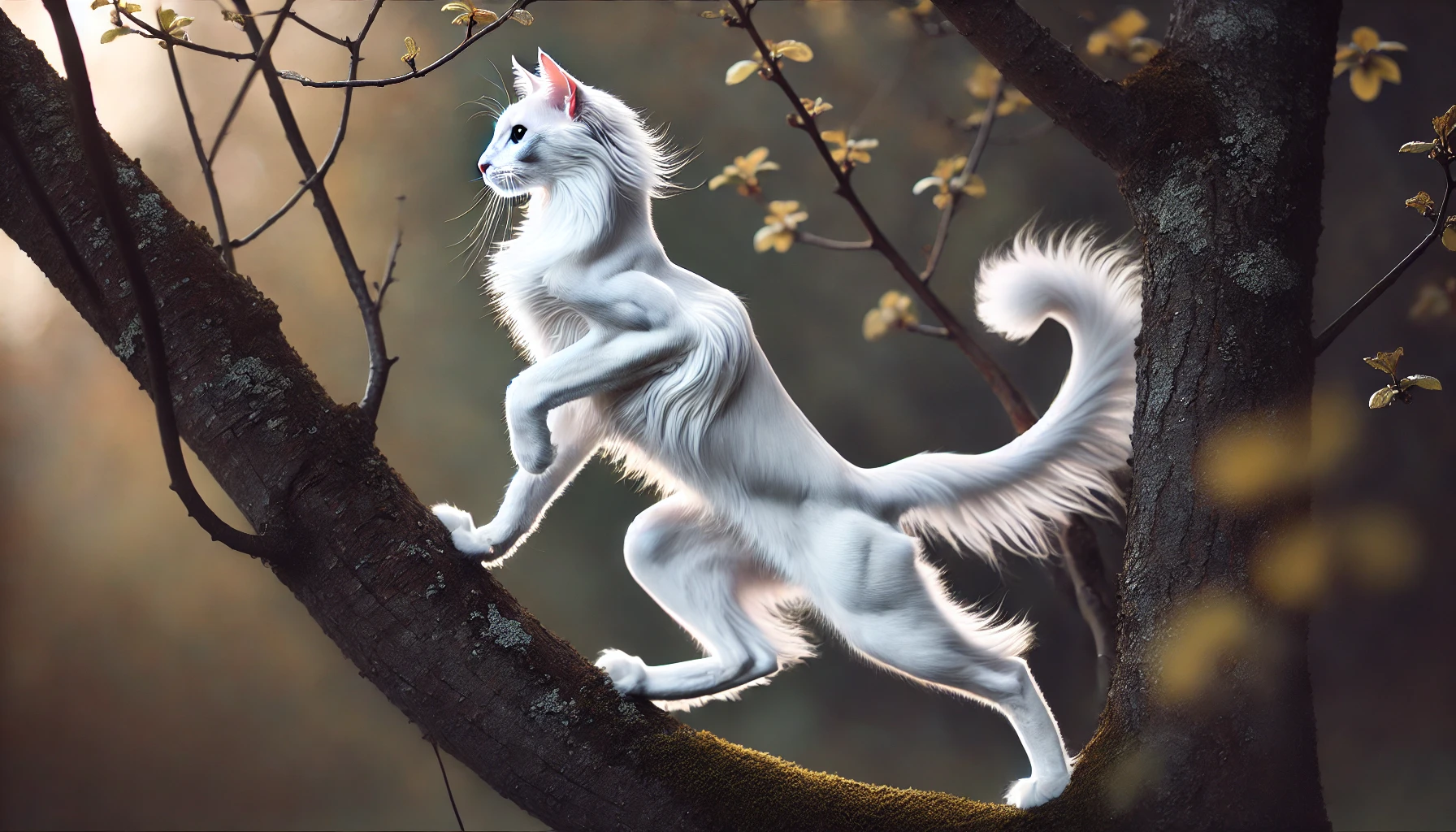
Body Build: Graceful, Athletic Structure
The body of the Turkish Angora is slender, long, and muscular, making them incredibly agile and athletic.
Their legs are long and lean, with their hind legs being slightly longer than the front, which gives them an added boost of speed and jumping ability.
Turkish Angoras are natural climbers and love to perch in high places within the home, using their agility to explore areas other cats might not reach.
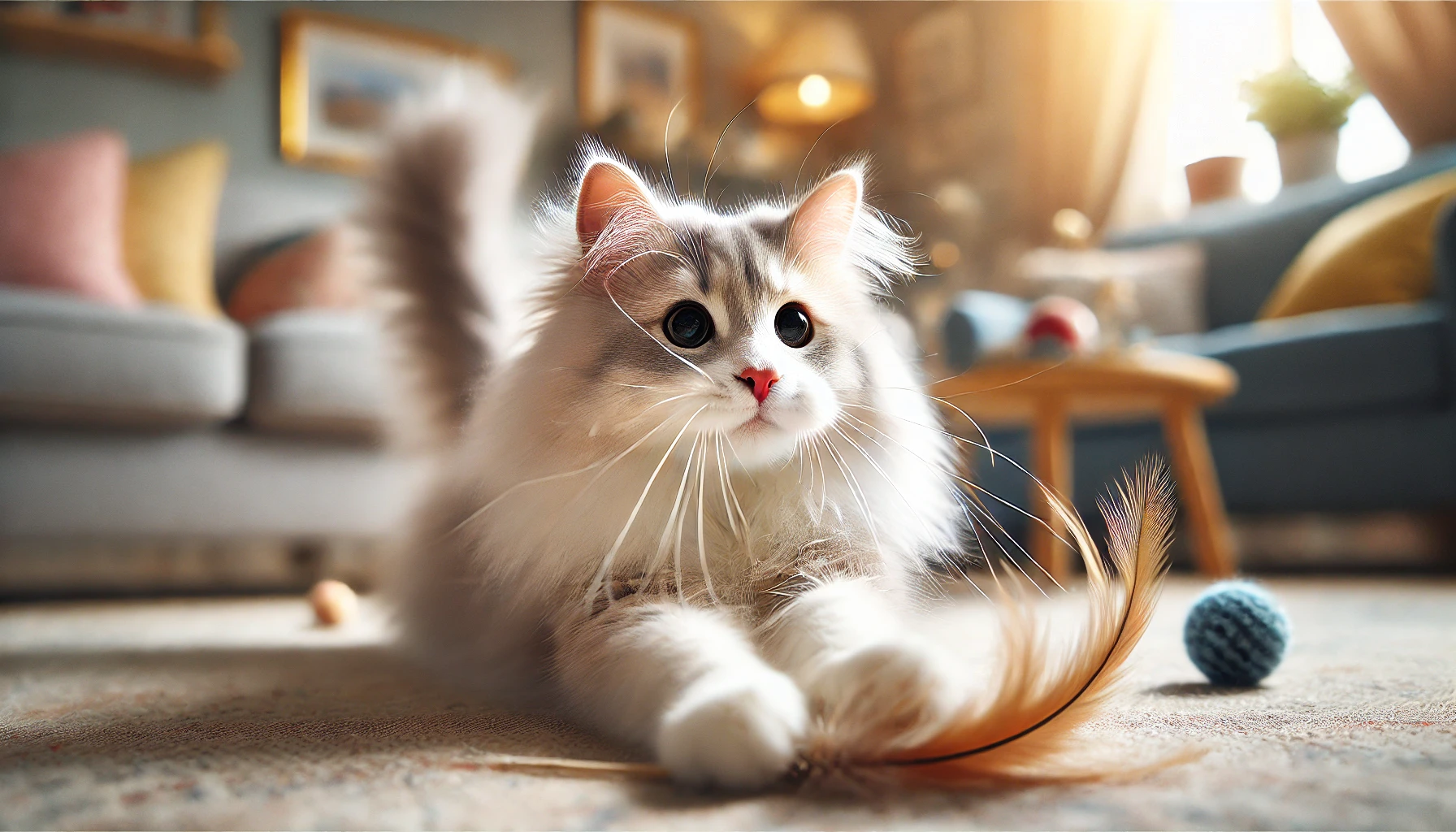
Personality Traits: Elegance Meets Playfulness
Though they may appear elegant, Turkish Angora cats are playful, curious, and intelligent.
They are highly social and enjoy human interaction.
They also have a mischievous side, often engaging in playful antics to get attention.
Turkish Angoras are highly adaptable, making them well-suited for both family homes and single owners.
They easily form strong bonds with people and are affectionate companions.
Despite their delicate appearance, Turkish Angoras are energetic and require both mental and physical stimulation to stay happy and healthy.
- Silky Coat: Known for their soft, medium-to-long coat available in various colors.
- Eye Color: Characterized by the odd-eyed trait and bright almond-shaped eyes.
- Graceful Body: Long, lean, muscular body that supports their agility.
- Energetic Personality: Playful, intelligent, and social; they love to climb and explore.
Turkish Angoras are known for their elegant, agile body, silky coat, and mesmerizing eyes. Their graceful structure reflects their energetic nature, making them one of the most captivating breeds.
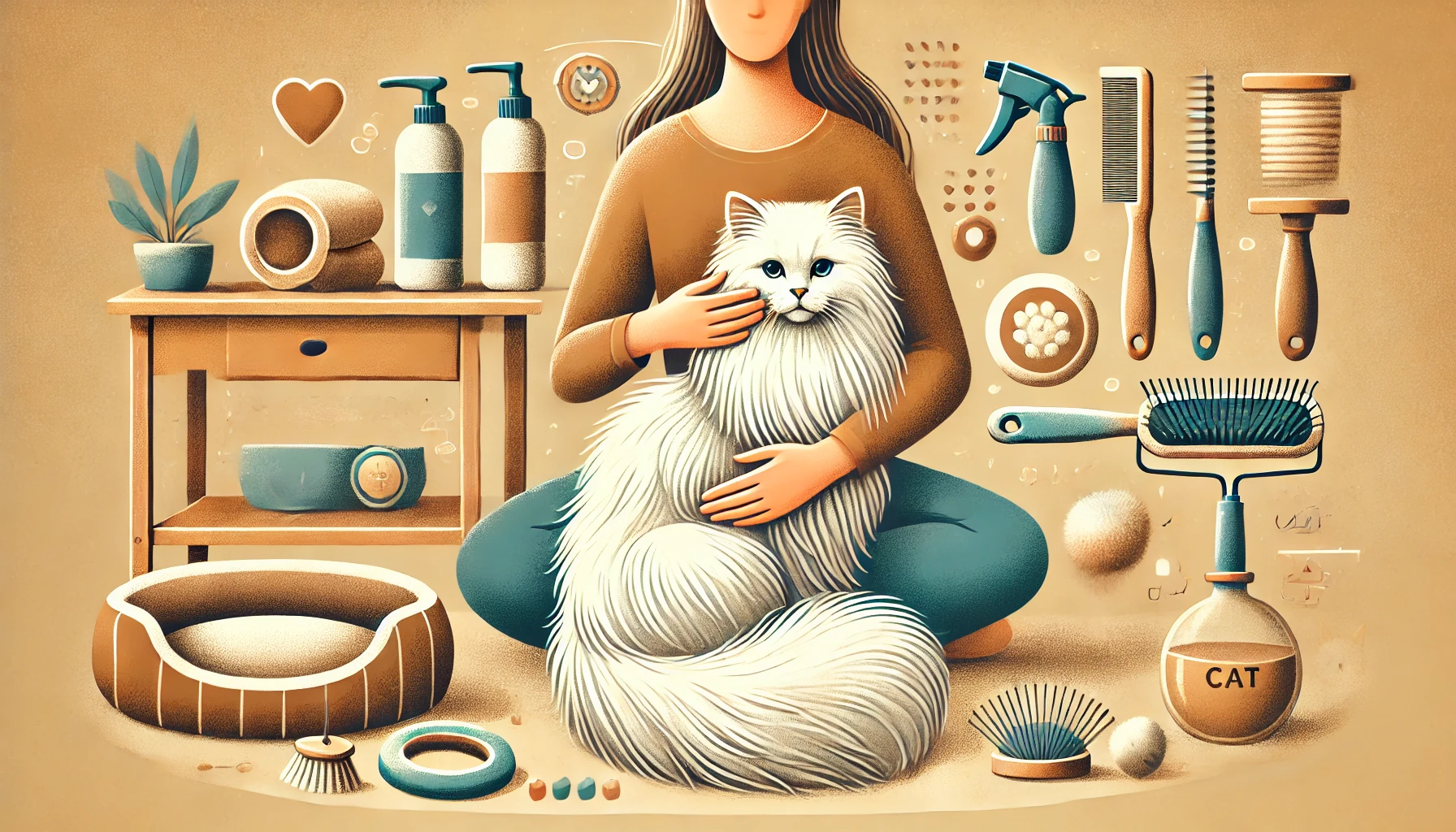
Caring for Your Turkish Angora Cat
The experience of owning a Turkish Angora cat is truly one of a kind, and proper care will keep them healthy and happy.
Turkish Angoras are one of the most energetic and intelligent breeds, which calls for a care routine that suits their particular needs.
From grooming their magnificent coat to keeping them entertained, Turkish Angoras require a balance of physical and mental stimulation.
Let’s get down to the details of how you can care for your Turkish Angora to help them thrive in your home.
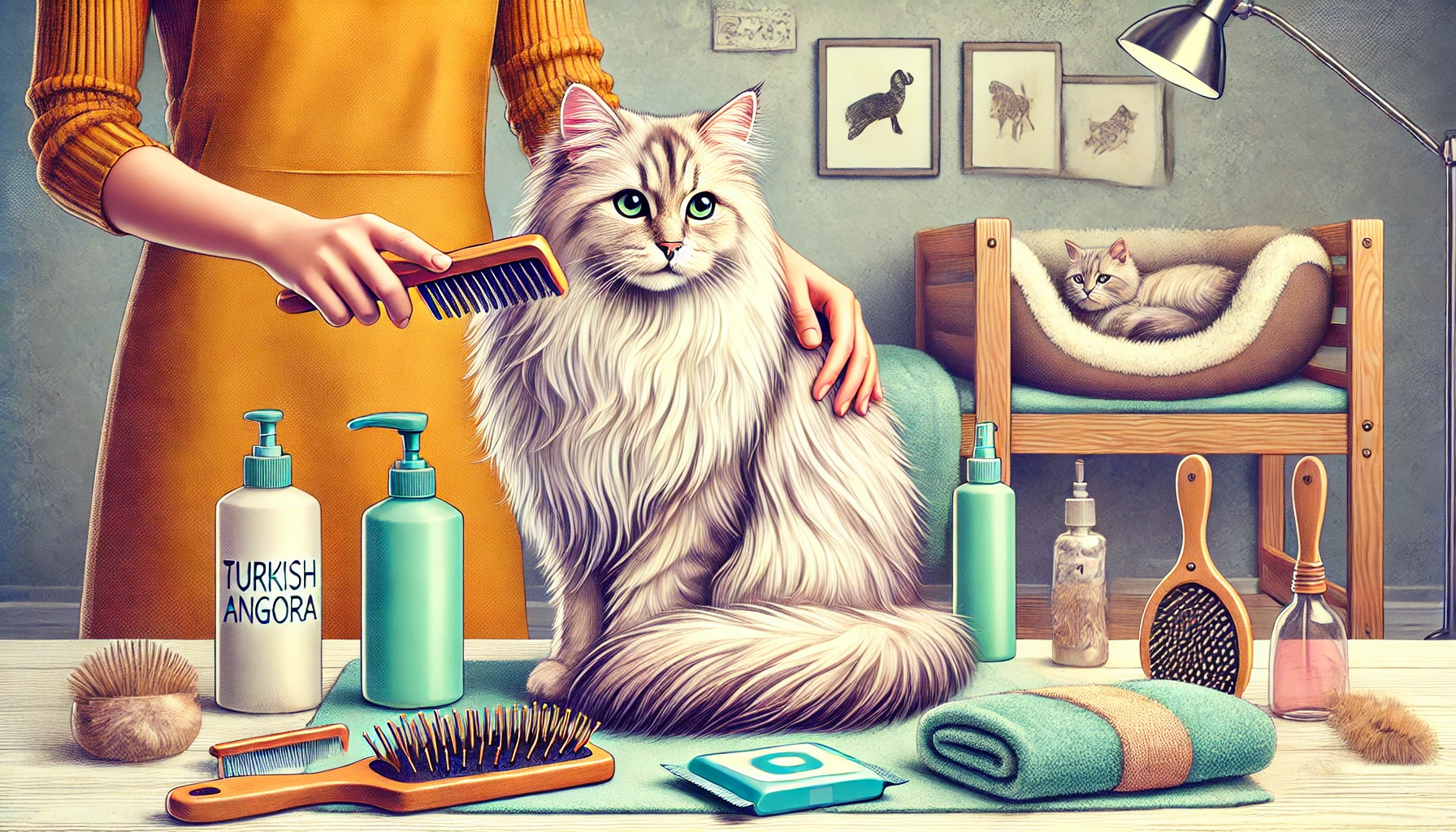
Grooming Needs of the Turkish Angora
Even though Turkish Angoras possess long, silky fur, they have relatively low grooming needs.
Without an undercoat, they do not shed like other long-haired breeds, and their fur does not mat as easily.
However, regular brushing is still encouraged to keep their coat healthy and shiny.
You should aim to brush your Turkish Angora at least once or twice a week to remove loose hairs and avoid tangles.
During shedding season, you may need to brush them more often due to the excess fur.
Bathing is generally not necessary unless your cat gets particularly dirty, as Turkish Angoras are very good at keeping themselves clean.

Diet and Nutrition for a Healthy Cat
A well-rounded, nutritious diet is crucial to the general health and well-being of your Turkish Angora.
All cats are obligate carnivores, so your cat’s diet should be rich in high-quality protein.
Look for cat food that lists meat or fish as the first ingredient.
Ensure your Turkish Angora receives a balanced amount of proteins, fats, and essential vitamins and minerals.
Avoid overfeeding, as Turkish Angoras are active and energetic, but they can still become obese with too many calories.
Always provide fresh water to keep your cat hydrated, especially if they are on a dry food diet.
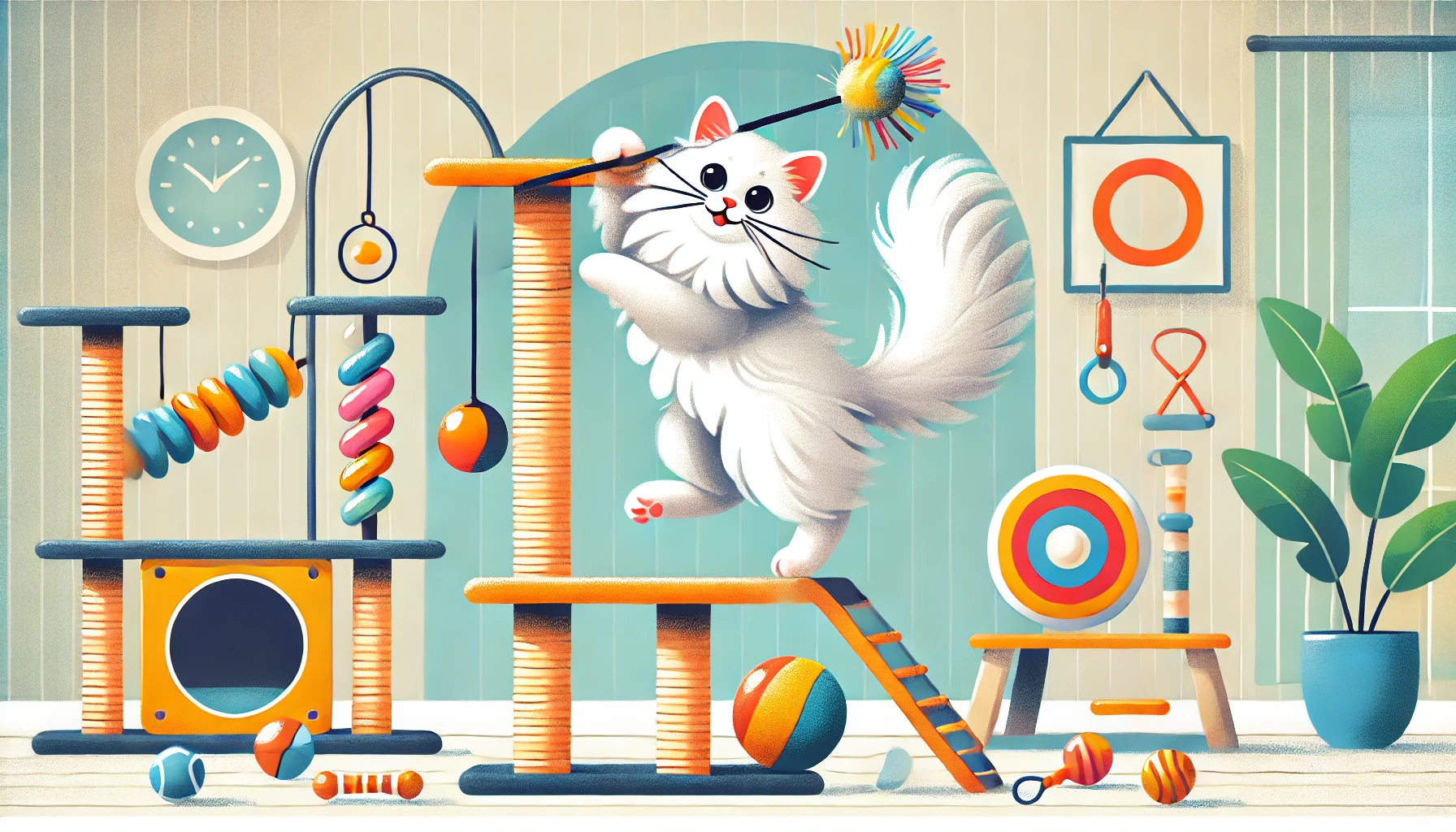
Exercise Needs: Balancing Their Energy Levels
Turkish Angoras are highly energetic cats that require plenty of exercise to stay happy and healthy.
Engage their minds and burn off energy with interactive play sessions.
Toys that stimulate their natural hunting instincts, such as feather wands, laser pointers, or puzzle feeders, are ideal.
Turkish Angoras are also natural climbers, so providing them with vertical spaces, such as cat trees or shelves, gives them opportunities to climb and exercise their agility.
Regular playtime helps maintain their physical health and prevents boredom, which can lead to misbehavior.

Special Health Concerns Related to Turkish Angora Cats
Although Turkish Angoras are generally a healthy breed, they can be prone to certain health issues, especially if they have a white coat.
Deafness is a common problem in white-coated Turkish Angoras, particularly in odd-eyed cats, where one ear (usually on the side of the blue eye) may not be fully functional.
Your veterinarian can catch early signs of this issue during routine check-ups.
In addition, Turkish Angoras, like all cats, can be prone to dental disease, so regular tooth brushing and dental checkups are important.
Keeping vaccinations current, preventing parasites, and scheduling regular vet visits will ensure your Turkish Angora remains healthy for many years.
- Grooming: Brush them once or twice a week to keep their coat in the best condition.
- Diet: A high-protein diet with balanced nutrients is essential for their health.
- Exercise: Daily interactive play and vertical climbing spaces help burn off energy.
- Health: Regular vet checkups, dental care, and monitoring for possible deafness in white-coated cats are important.
Caring for a Turkish Angora requires regular grooming, a balanced diet, and plenty of mental and physical stimulation to keep them healthy and happy.
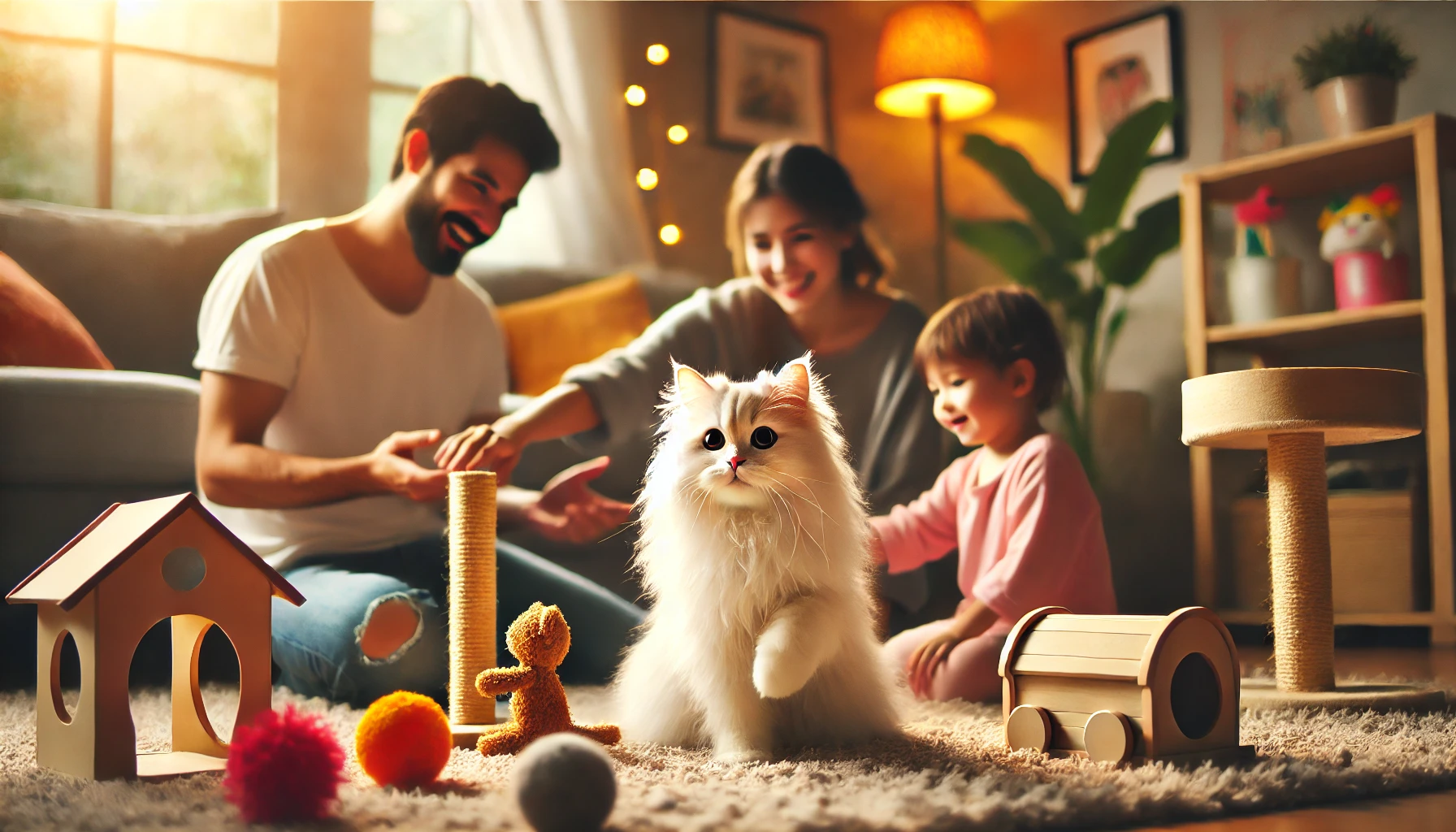
Temperament and Behavior of Turkish Angora Cats
Turkish Angora cats are not only beautiful; their disposition is captivating and unique.
Smart, affectionate, and full of energy, they make excellent companions for the right owner.
Understanding the temperament and behavior of Turkish Angoras will help you develop a stronger bond with your cat while providing them with the best care in your home.
Let’s explore what makes them stand out when it comes to temperament and behavior.

Affectionate and Social Nature
Turkish Angoras are very affectionate cats that love being around people.
They will bond with you and sometimes follow you around the house in search of attention and affection.
Turkish Angoras are also loyal and can become very loving, making them great companions for families, singles, or even seniors.
They are also quite vocal, often using soft meows or chirps to communicate their needs and affection.
Despite being an independent breed, they enjoy spending time with people and can get lonely if left alone for long periods.
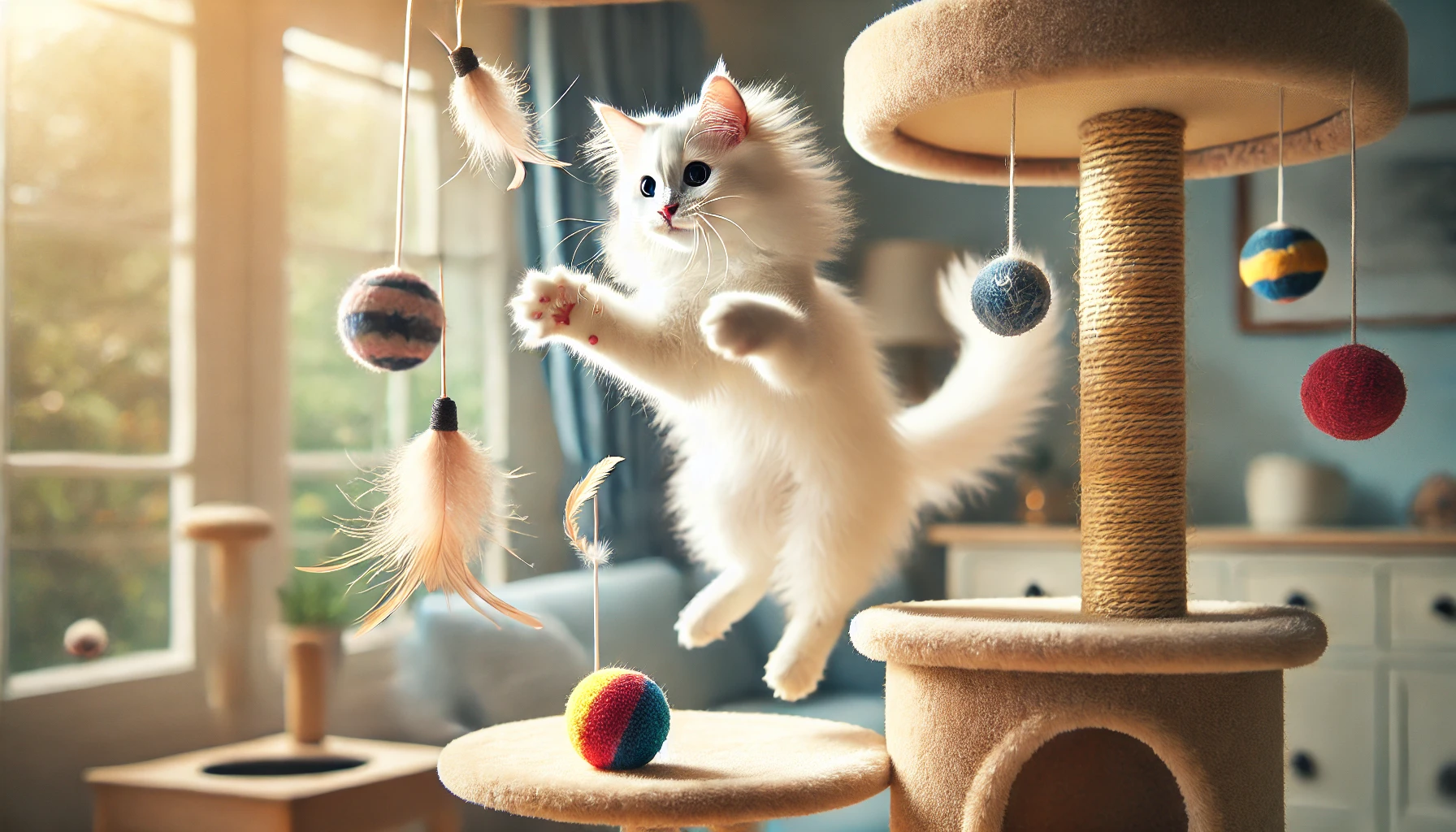
High Energy: Playing and Exploring
One of the most striking features of Turkish Angora cats is their high energy level.
They are playful and curious, always seeking something to explore or a game to engage in.
Turkish Angoras enjoy interactive play and need mental and physical stimulation to stay happy.
These cats are natural climbers, so providing vertical spaces like cat trees or shelves is essential for their well-being.
Occasionally mischievous, they may find ways to open doors, cabinets, or solve puzzles.
Regular playtime is crucial to keeping them mentally and physically stimulated.

Interactions with Children and Other Pets
Turkish Angoras are generally good with children and can be affectionate and playful companions.
Their gentle yet playful nature makes them a great fit for families with kids, as long as the children know how to handle cats respectfully.
When it comes to other pets, Turkish Angoras tend to get along well with both dogs and other cats, especially when introduced properly.
However, their dominant personality may surface at times, particularly with other cats, so slow introductions and supervision are recommended when bringing new pets into the home.
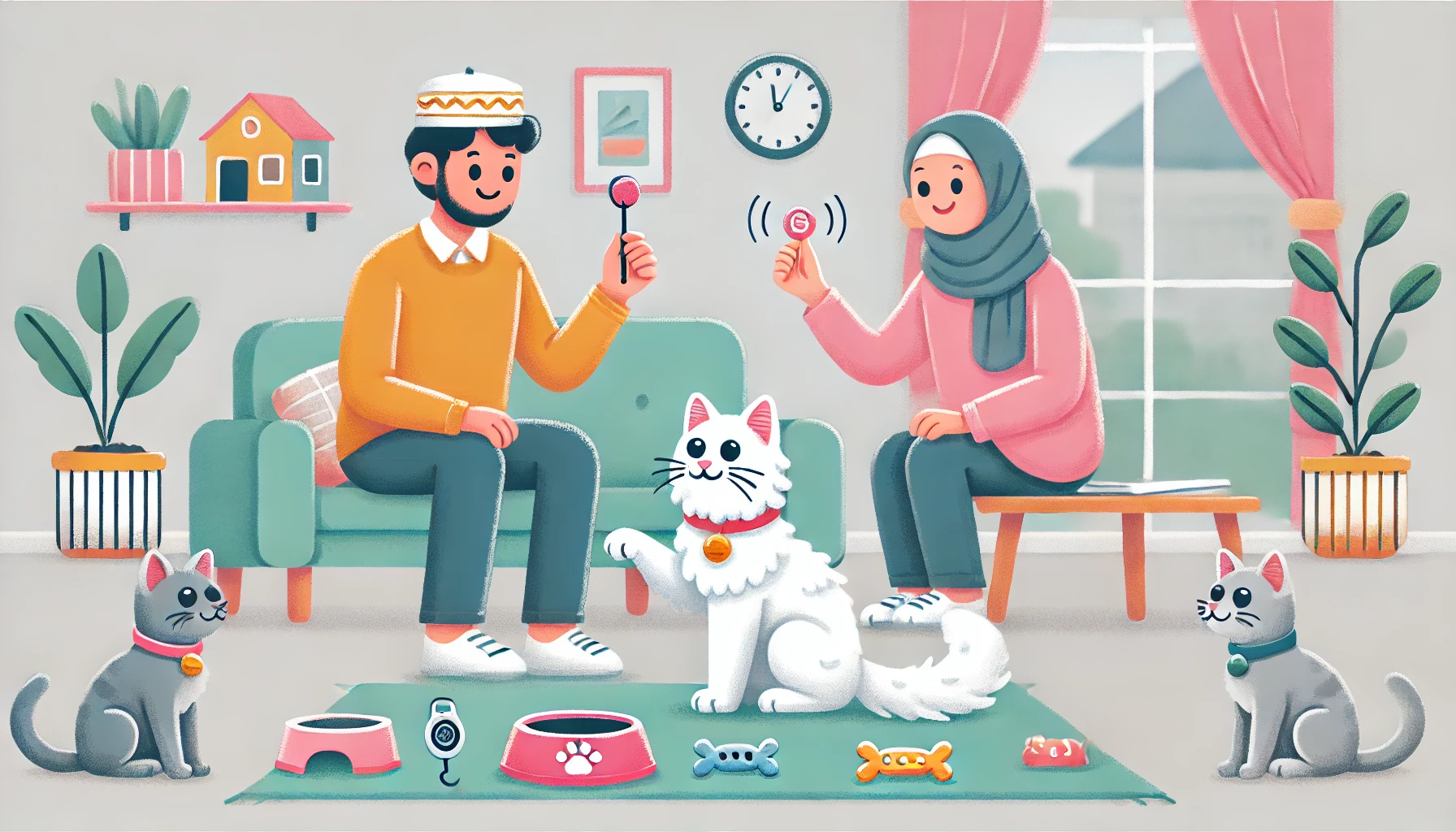
Training Tips: Encouraging Good Behavior
Thanks to their intelligence and curiosity, Turkish Angora cats are highly trainable.
They can learn commands, tricks, and even how to walk on a leash if you start training early.
Positive reinforcement techniques, such as treats and praise, work best when training these clever cats.
Given their mischievous nature, it’s important to ensure they have enough stimulation to prevent boredom.
Puzzle toys, interactive feeders, and regular play sessions can help channel their energy into positive behavior, preventing unwanted mischief.
- Affectionate Nature: Turkish Angoras are attached to their families and express their affection openly.
- High Energy Levels: These cats need plenty of playtime and love exploring their surroundings.
- Family Friendly: They get along well with children and other pets when introduced properly.
- Highly Trainable: Their intelligence makes them easy to train using positive reinforcement techniques.
Despite their delicate appearance, Turkish Angoras are highly energetic, intelligent, and playful. They require engagement and attention to prevent boredom and behavioral issues.
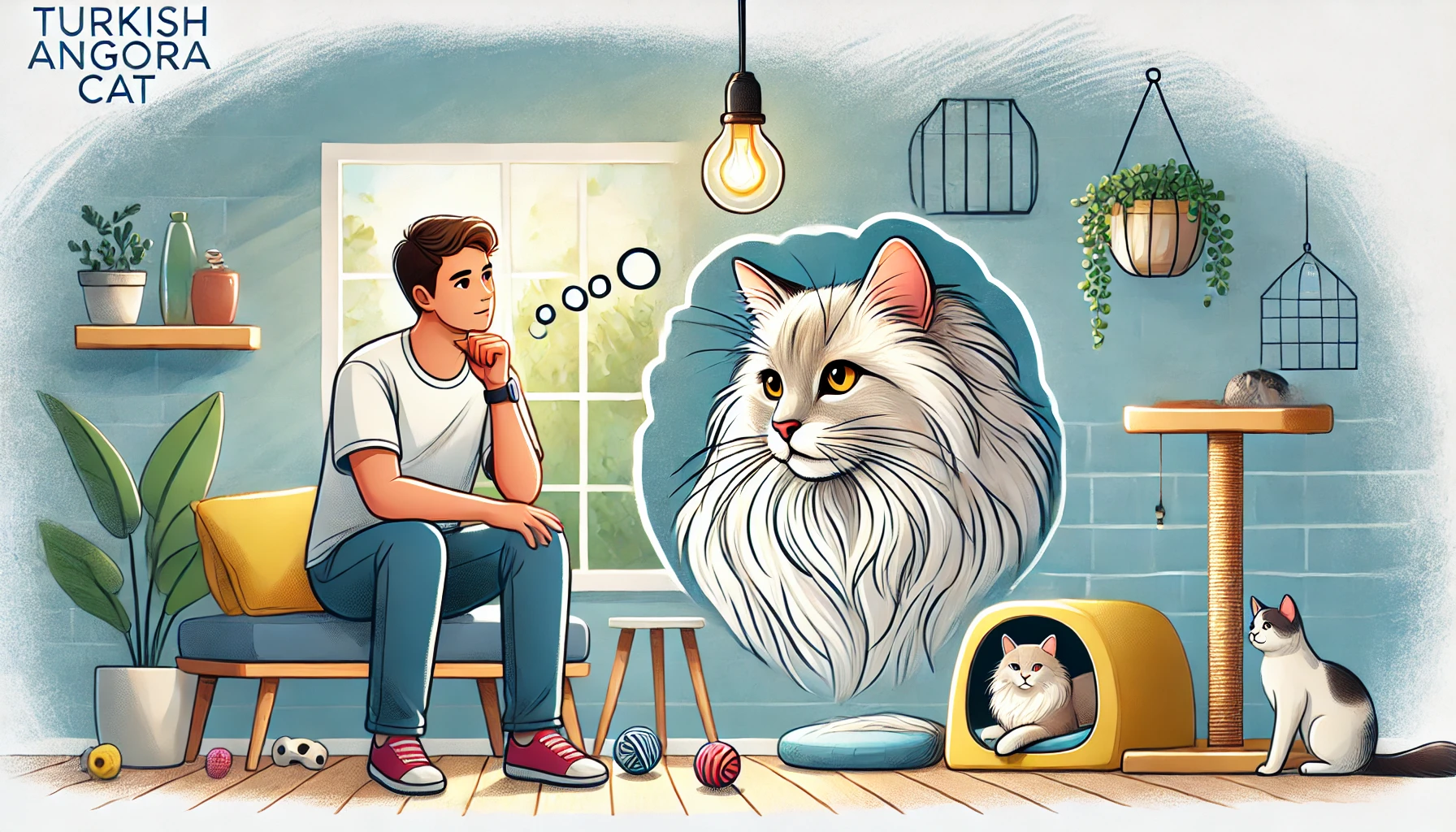
Is a Turkish Angora Cat Right for You?
Deciding to bring a Turkish Angora cat into your household can be an exciting decision, but it’s crucial to know whether this breed fits your lifestyle.
While Turkish Angoras are beautiful, affectionate, and intelligent, they have particular needs and personality traits that you should be aware of before bringing one home.
With their high energy levels and social nature, these cats can bring a lot of joy but may not be suited to just any household.
Let’s explore what you need to know to determine if a Turkish Angora is the right fit for you.
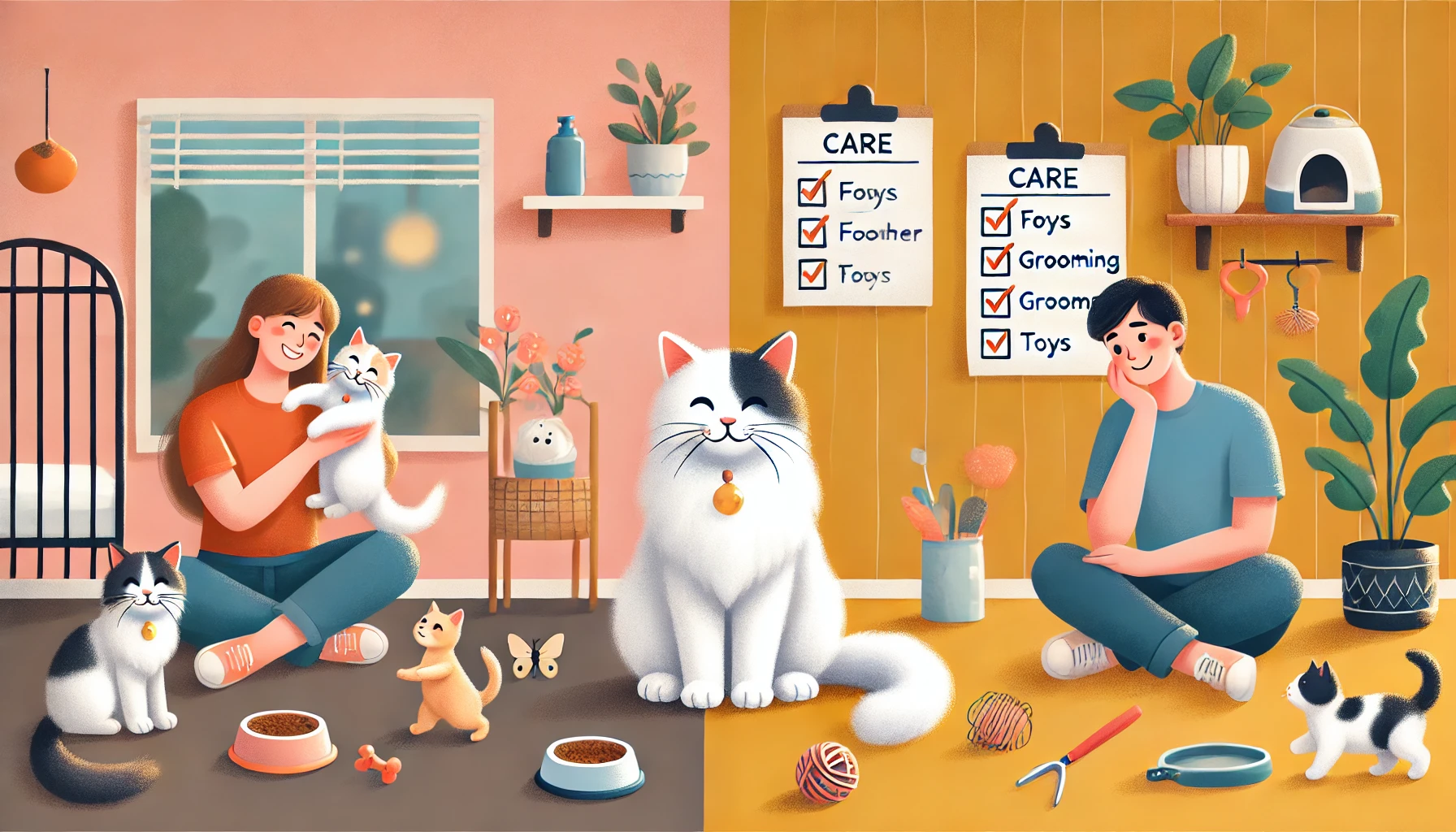
Pros and Cons of Owning a Turkish Angora
Like all breeds, Turkish Angoras come with both advantages and challenges.
Understanding these qualities will help you make a well-informed decision before adopting one.
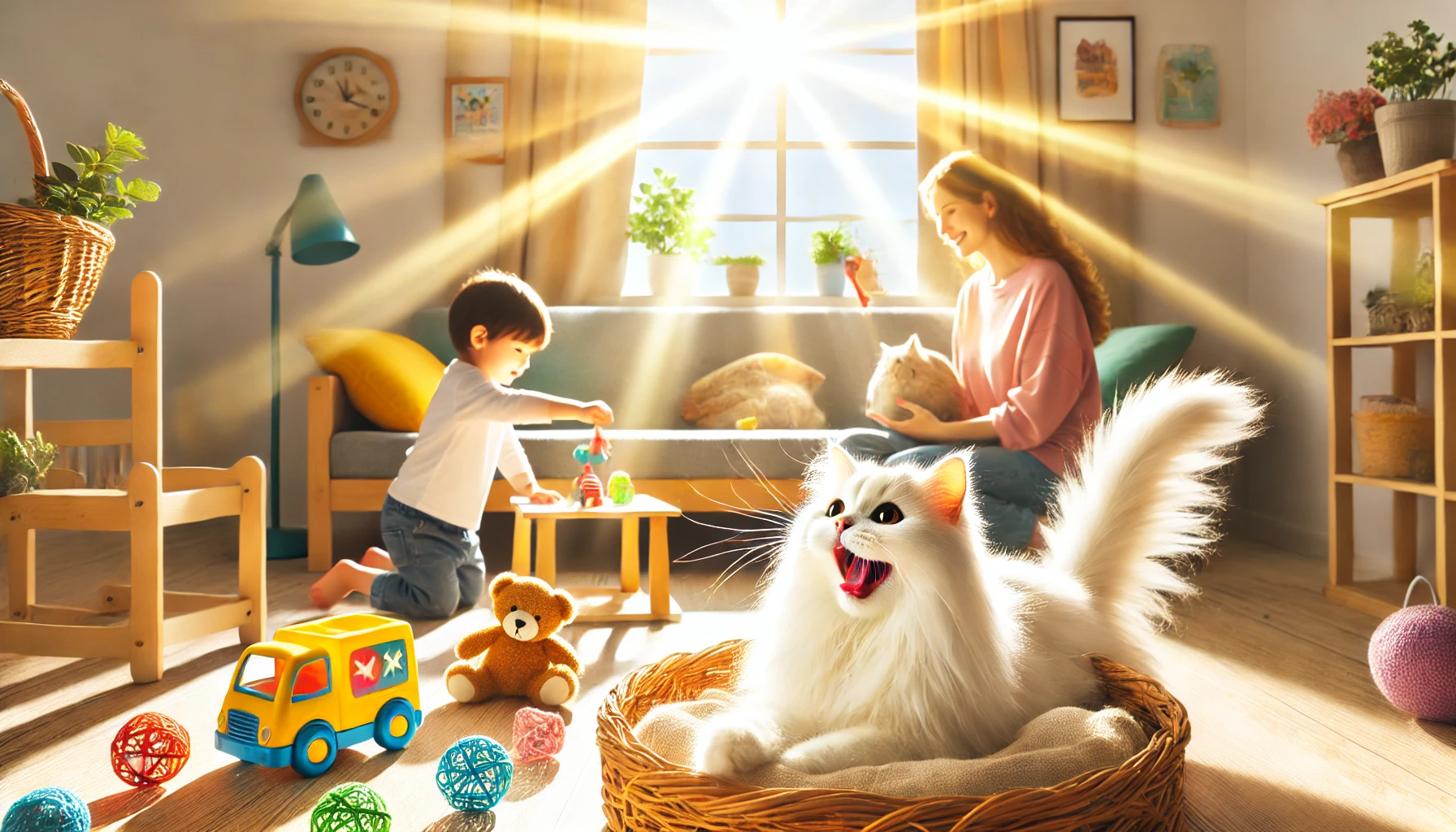
Pros
Turkish Angoras are affectionate, intelligent, and playful.
They bond well with their owners and make great companions for people who enjoy active, social pets.
Additionally, their relatively low grooming needs, due to the lack of an undercoat, make them easier to maintain compared to other long-haired breeds.
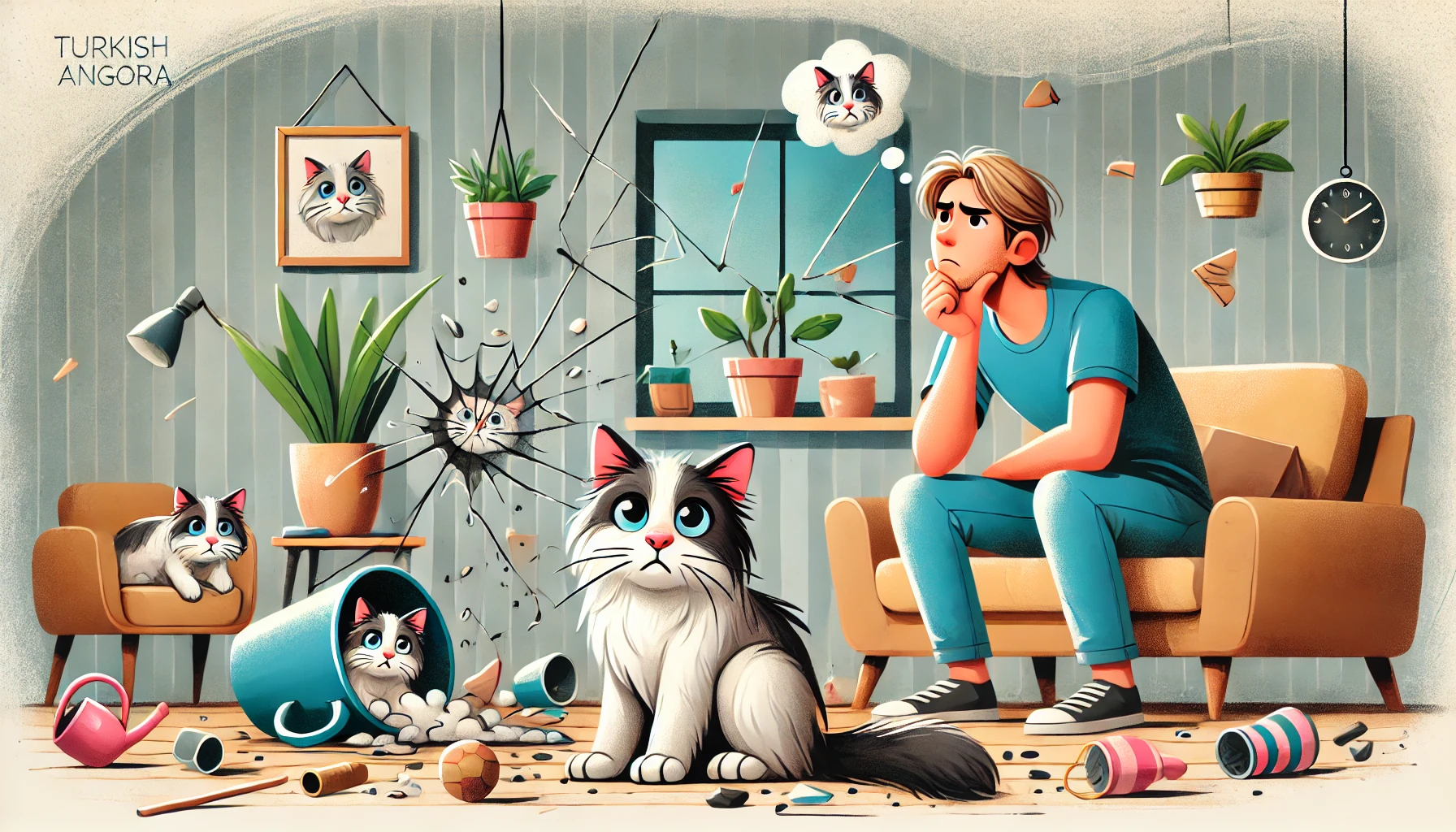
Cons
Turkish Angoras are very energetic and need plenty of activities and stimulation.
If their physical and mental needs are not met, they can become bored and develop behavioral problems.
Their vocal nature may also be a drawback for some, especially those who prefer quieter pets.
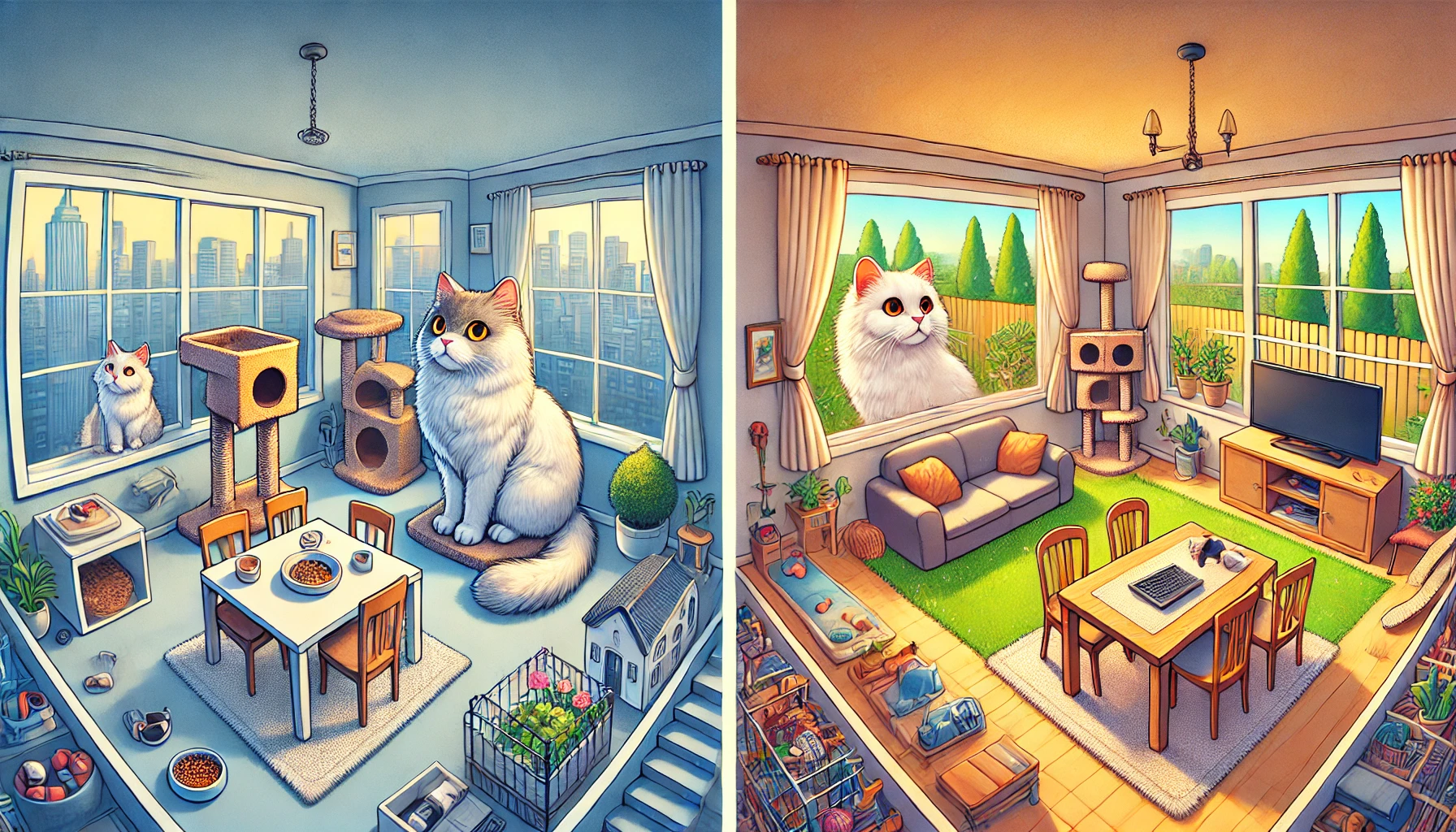
Living Environment: Apartment vs. House
Turkish Angoras are adaptable and can live in both apartments and houses.
However, their high energy means they need enough space to move around, explore, and play.
If you’re in an apartment, it’s important to provide vertical spaces, such as cat trees or shelves, to satisfy their climbing instincts.
In a house, Turkish Angoras will enjoy having more space to roam, but it’s important to keep them safely indoors, as their adventurous nature may lead them to wander off.

Compatibility with Families and Individuals
Turkish Angoras are great companions for a variety of households.
They are suitable for families, singles, and seniors, provided they receive plenty of attention and interaction.
They get along well with children and other pets, particularly when introductions are done carefully.
However, if you have a busy lifestyle or are often away from home, a Turkish Angora may not be the best fit, as they thrive on social interaction and can become lonely during long absences.

Final Considerations Before Adopting a Turkish Angora
Before adopting a Turkish Angora, it’s important to assess whether you can meet their high-energy and social needs.
This breed is best suited for owners who can dedicate time and attention to them regularly.
If you’re looking for an independent or low-maintenance pet, a Turkish Angora may not be the ideal choice.
However, if you’re prepared to provide a stimulating and loving environment, these cats can bring years of happiness, companionship, and entertainment.
- Pros: Playful, intelligent, and relatively low-maintenance when it comes to grooming.
- Cons: High energy and vocal nature may not be suitable for every household.
- Living Environment: Turkish Angoras can adapt to both apartments and houses but need enough space to exercise.
- Compatibility: They are good with families, singles, and other pets but require social interaction.
While Turkish Angoras are affectionate and adaptable, their high energy levels and need for attention mean they are best suited for active households ready to meet their needs.
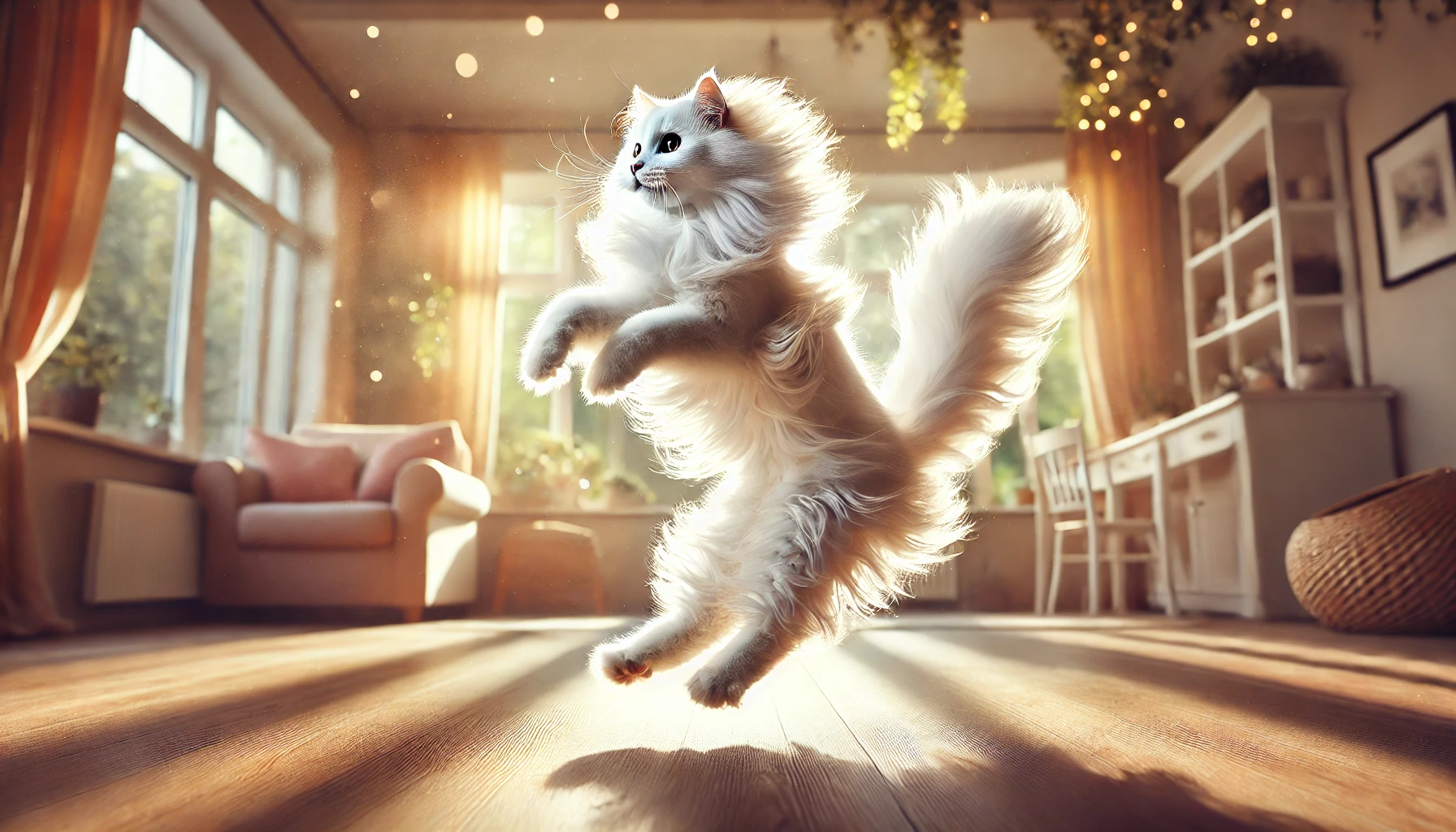
Overview: The Elegance and Energy of Turkish Angora Cats
The Turkish Angora breed represents a unique and alluring balance of beauty, intelligence, and playfulness.
From their graceful appearance to their silky coats and social disposition, there’s much to admire about these cats.
However, owning a Turkish Angora requires thoughtful consideration, as their particular needs and characteristics must be met for them to thrive in any environment.
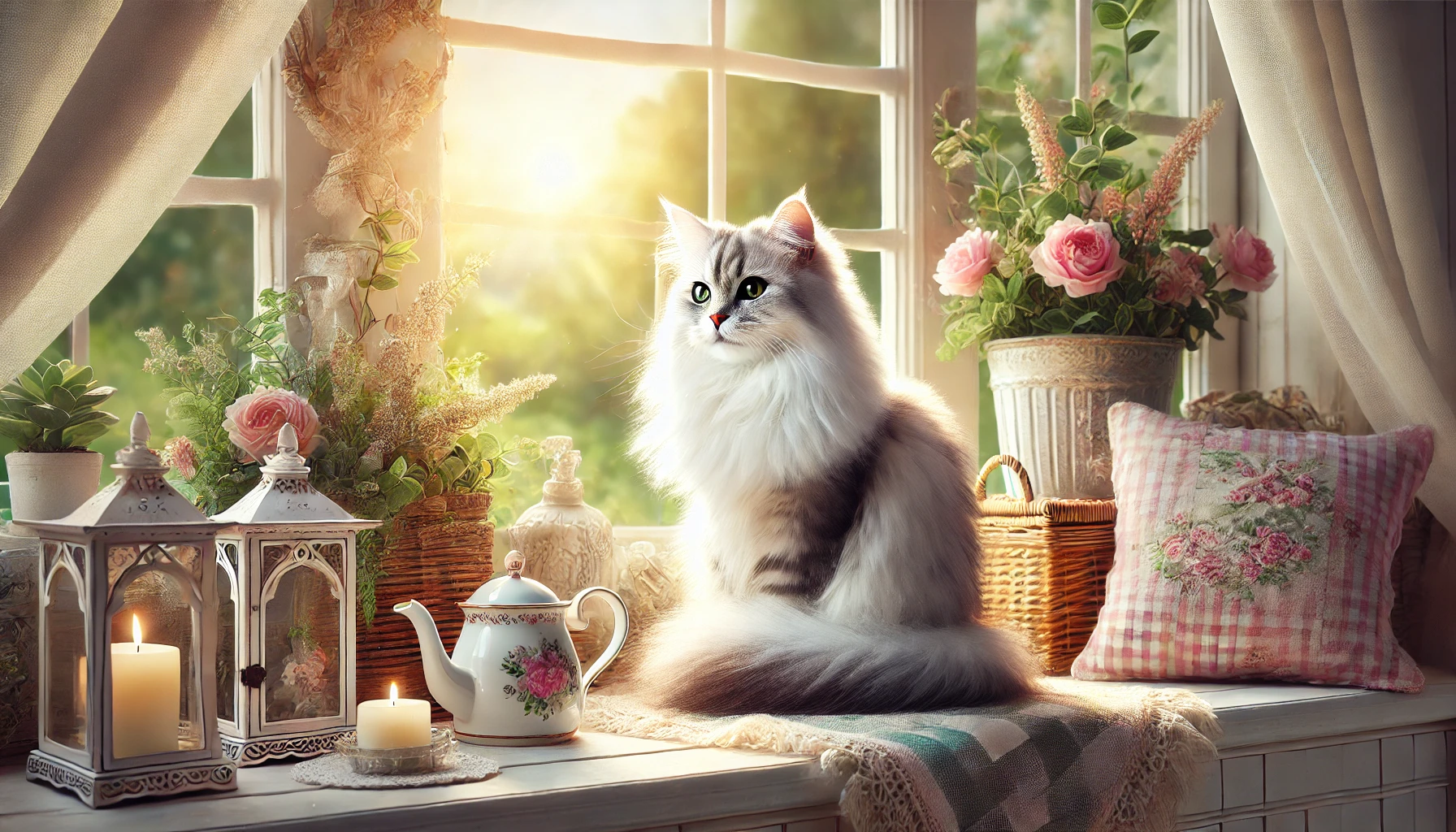
The Irresistible Charm of Turkish Angoras
From their affectionate nature to their keen intelligence, Turkish Angoras have so much to offer.
They form close attachments to their owners, often following them around in search of attention and interaction.
Turkish Angoras are also quite vocal, using soft meows and chirps to communicate their needs and affection—an endearing trait, for sure.
With their high energy levels, they require both mental and physical stimulation to stay satisfied and prevent boredom.
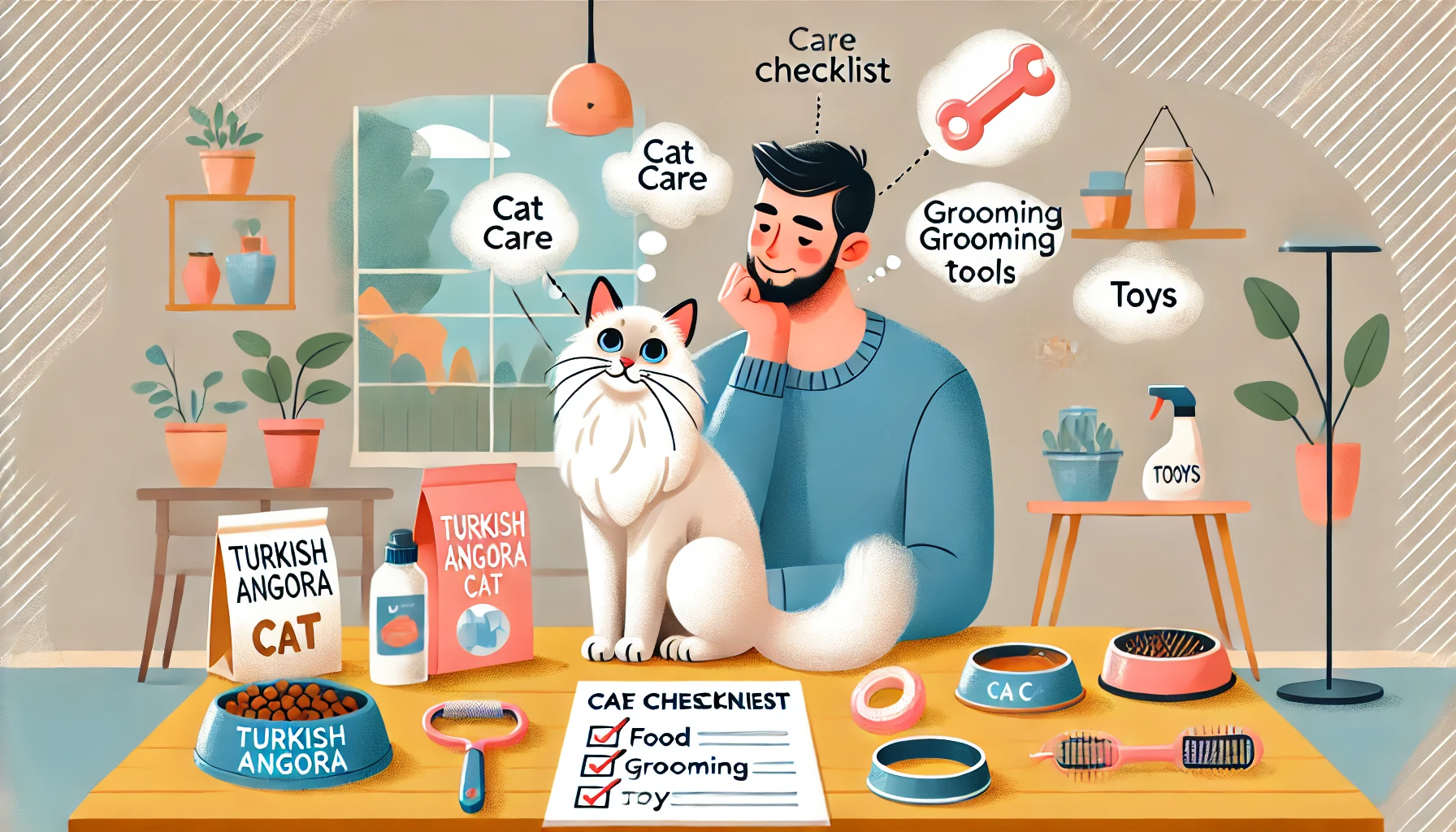
Key Considerations for Turkish Angora Owners
- Grooming: While Turkish Angoras have long and silky coats, grooming is relatively easy since they lack an undercoat. Regular brushing once or twice a week will keep their fur smooth and tangle-free.
- Exercise: These agile and active cats need plenty of space for running, playing, and climbing. Vertical spaces like cat trees or shelves help satisfy their climbing instinct.
- Affectionate Companions: Turkish Angoras are loving and devoted, thriving on attention. However, they can become lonely if left alone for long periods.
- Training: Their intelligence makes them highly trainable. With positive reinforcement, they can learn commands, tricks, and even how to walk on a leash.

Is a Turkish Angora the Right Cat for You?
While Turkish Angoras can adapt to various living environments, they are best suited for homes that can provide ample attention and interaction.
Their playful and energetic nature makes them excellent family pets, and they also appeal to singles and seniors who are prepared to meet their stimulation and affection needs.
If you’re looking for a loyal and affectionate companion that brings both elegance and energy to your home, the Turkish Angora may be the perfect addition to your family.
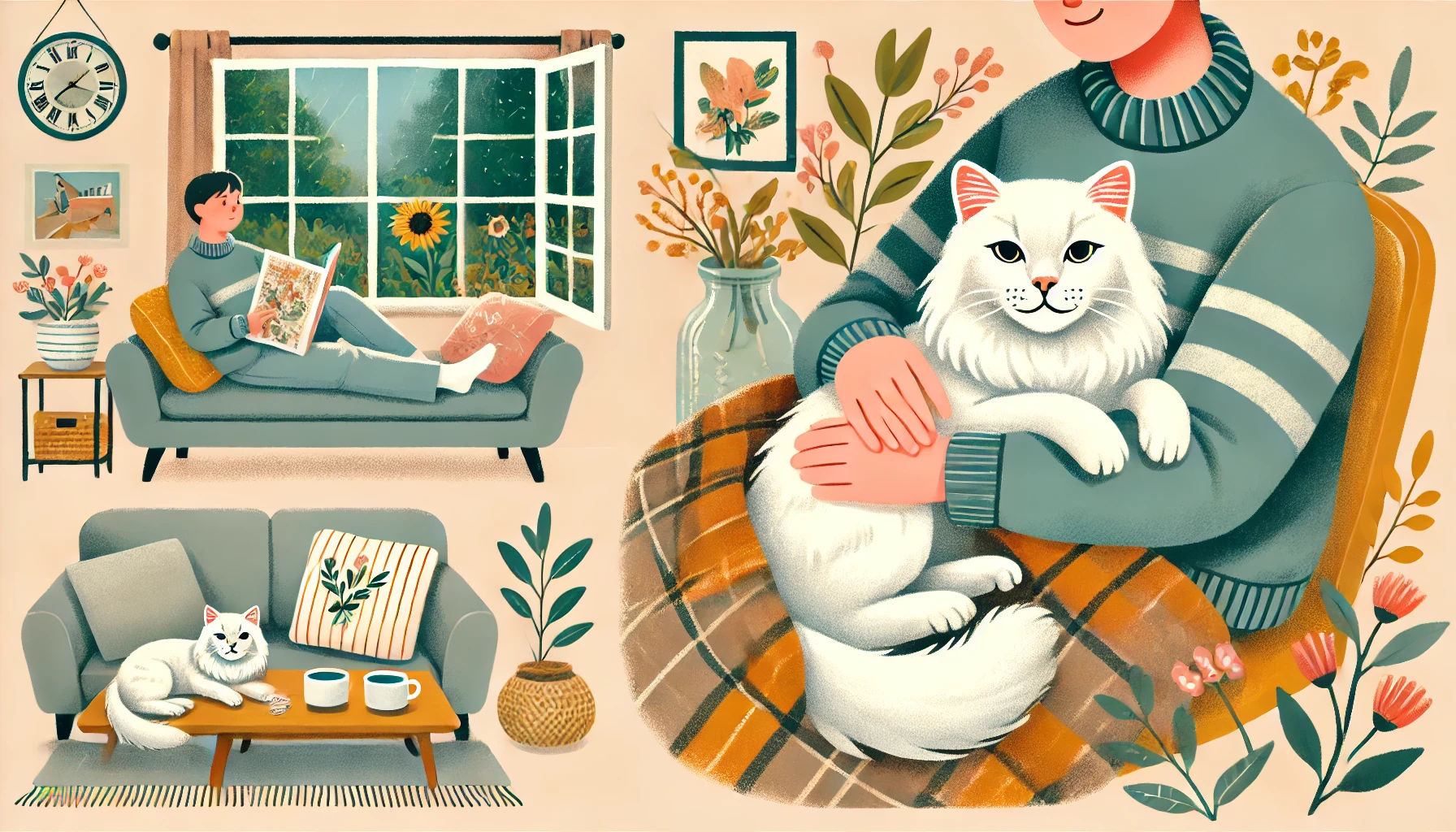
Final Thoughts on Turkish Angora Cats
In conclusion, Turkish Angora cats are graceful, intelligent, and playful animals with unique personalities that set them apart from other breeds.
They are active companions and, with the right environment and care, can provide many years of joy and companionship.
Whether in an apartment or a house, a Turkish Angora will fit in as long as you’re ready to invest your time and care.
The Turkish Angora provides the perfect blend of elegance, energy, and affection, making them an ideal companion for any cat lover.
The Turkish Angora is a breed that blends elegance and energy effortlessly. Their beauty, intelligence, and affectionate nature make them excellent companions for dedicated cat lovers.
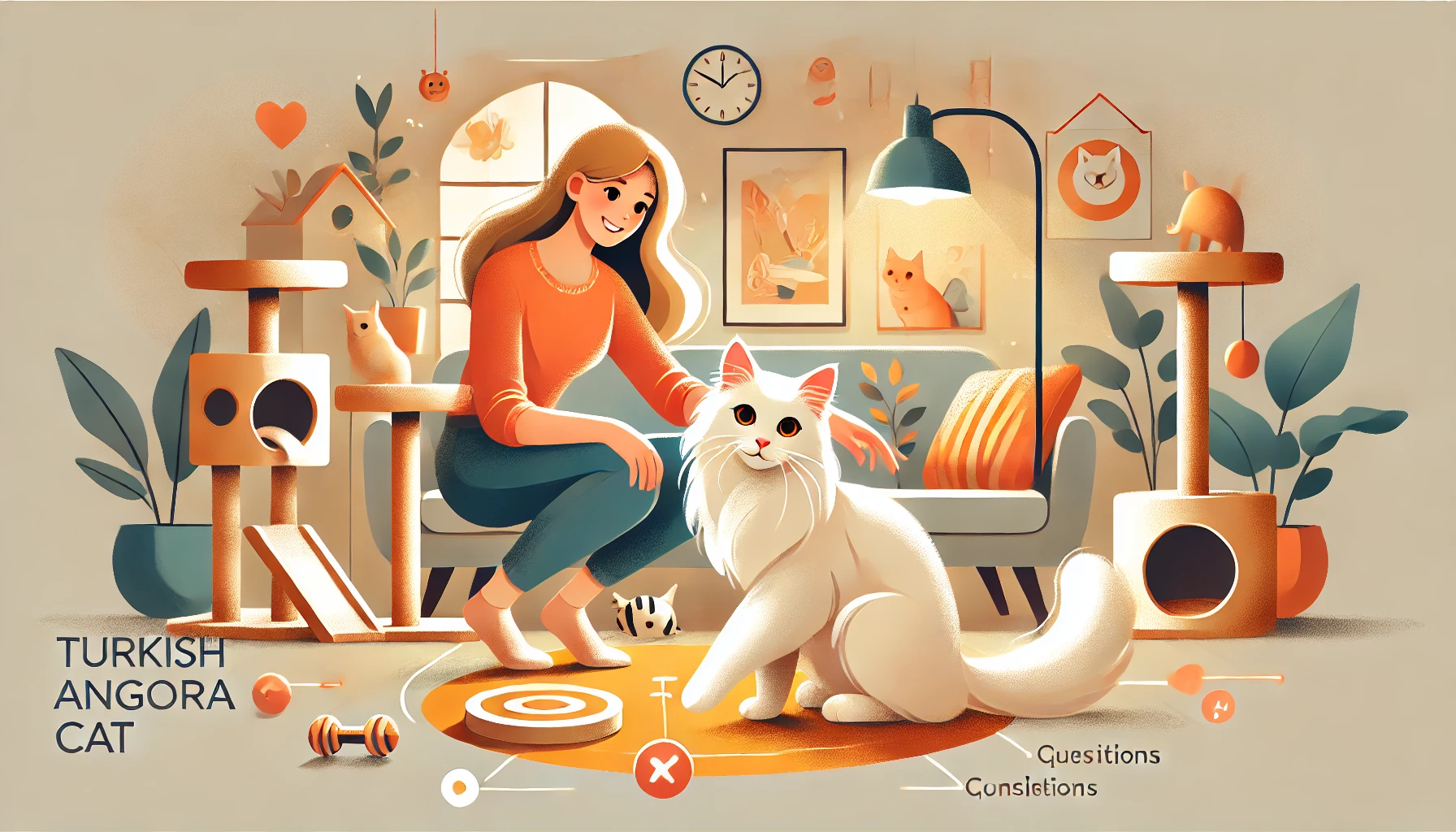
Frequently Asked Questions about Turkish Angora Cats
Turkish Angora cats are one of the oldest breeds and possess some of the most unique characteristics among cats.
In this section, we address some of the most frequently asked questions to help you better understand this fascinating breed.
Are Turkish Angora cats hypoallergenic?
No, Turkish Angora cats are not hypoallergenic.
While they shed less due to their lack of an undercoat, they still produce allergens through their saliva and dander, which can cause allergies in sensitive individuals.
How often should I groom my Turkish Angora cat?
Your Turkish Angora will benefit from grooming at least once or twice a week.
This helps prevent tangles and keeps their silky coat in good condition, especially during shedding periods, when more frequent grooming may be needed.
Do Turkish Angoras get along with other pets?
Yes, Turkish Angoras generally get along with other pets, including dogs and cats, if proper introductions are made.
However, their dominant personality may emerge, so it’s important to supervise interactions, especially during initial introductions.
Are Turkish Angora cats good with children?
Yes, Turkish Angoras are great family cats and get along well with children.
They are playful yet gentle, making them good companions for kids, as long as the children handle them with care and respect.
Can Turkish Angora cats be left alone for long periods?
Turkish Angoras are social by nature and do not fare well when left alone for extended periods.
They thrive on human interaction and can become lonely or develop behavioral issues if left by themselves for too long.
What health issues are common in Turkish Angora cats?
Deafness is a common issue in Turkish Angoras, especially in white-coated ones, and it may affect only one ear, particularly in odd-eyed cats.
They are also prone to dental problems, so regular check-ups and dental care are essential.
Are Turkish Angoras easy to train?
Yes, Turkish Angoras are intelligent and responsive to training.
They can learn commands, tricks, and even how to walk on a leash with positive reinforcement methods, making them a highly trainable breed.

